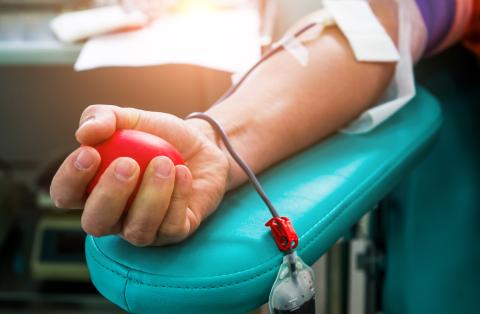Thank a Blood Donor!
“We all owe America’s blood donors a debt of gratitude for their selfless generosity. Everyone knows someone whose life has been changed through a blood transfusion. National Blood Donor Month is an opportunity to recognize the more than 7 million people who donate blood each year and encourage more people to become donors and help save lives,” said America’s Blood Center chief executive officer Kate Fry.
Every two seconds, someone needs blood in the United States. Blood donation is a critical and lifesaving practice that helps ensure a steady supply of blood for those in need, whether they are cancer patients receiving chemotherapy or victims of car accidents. The American Red Cross and local blood banks are the primary organizations responsible for collecting and distributing blood in the U.S.
There are several different types of blood donation, including whole blood donation, platelet donation, and plasma donation. Whole blood donation is the most common type of donation, and it involves giving one pint of blood, which is then separated into its various components such as red blood cells, plasma, and platelets. Platelet donation and plasma donation are also important forms of donation, as they are used to help treat patients with cancer, blood disorders, and other serious medical conditions.
To be eligible to donate blood in the United States, individuals must be at least 17 years of age, weigh at least 110 pounds, and be in good general health. There are also certain restrictions on who can donate blood, such as individuals who have recently traveled to certain countries or who have certain medical conditions.
The process of donating blood typically takes about an hour, and it includes a medical screening to ensure that the donor is healthy and eligible to donate blood. This screening includes a blood pressure check and a questionnaire about the donor’s medical history and recent travel.
Blood donation is a safe and simple process that can help save the lives of others. In the United States, blood donation is a vital part of the healthcare system, and it is essential for ensuring that there is a steady supply of blood available for those in need.
It’s important to note that while the need for blood is constant, the number of donors decreases during the holiday season, when many people are busy with their families and other activities. This can create a shortage of blood supplies, so it’s important to try to donate blood during this time of year.
By giving blood, you can make a meaningful difference in the lives of others and help ensure that there is a steady supply of blood available for those in need. If you are not eligible to donate blood because of travel or health history, consider volunteering, hosting a blood drive, or donating to blood donation organizations like the American Red Cross or your local blood bank.
